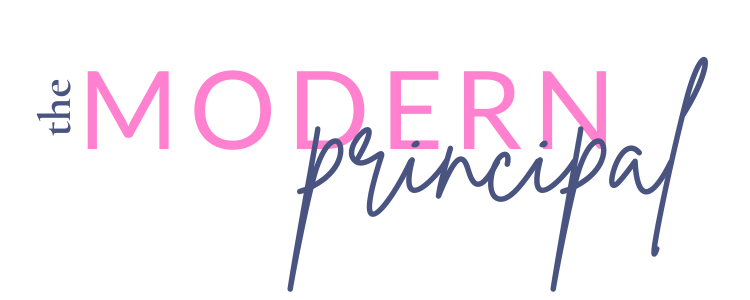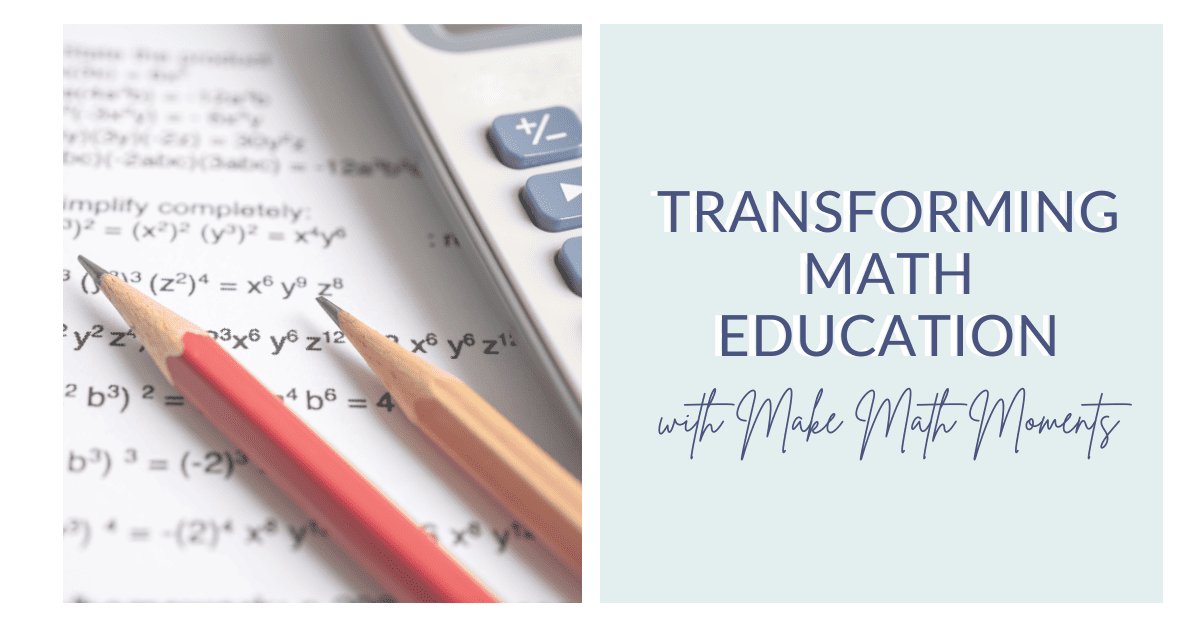I Just Don’t Do “Math”
As principals, it’s impossible to become experts in each and every content area your students are expected to master. With the adoption of common core in the mid 2010’s, however, the focus in the area of math turned to deeper math understanding as opposed to surface level tactics to proficiency. Instructional leaders, regardless of their own relationship with math, needed to be a part of these important pedagogical conversations to raise achievement.
Engagement in math can be a challenge, especially when students believe they won’t understand the concepts and if their teachers have their own frot relationship with math. For example, how does a teacher make long division more meaningful for a 9 year old when the teacher only knows how to do long division, but not why we do long division? Recently on our podcast, Christy and Karen had the pleasure of chatting with and learning from Jon Orr and Kyle Pearce from Make Math Moments. Their work as math consultants centers around showing teachers strategies and models to make more sense and meaning of mathematical concepts.
A math classroom community must be one centered around vulnerability, risk-taking, problem solving and answer-seeking. The teacher shouldn’t be the one in the room that holds the answer key, but rather fosters the sense that the teacher is a part of the community of co-learners, always working to uncover solutions, discover the why behind the algorithms and problem-solve real life situations. On our pod, we discussed some key strategies on where to start in your building:
- Needs analysis on the student progress and vertical continuum
- Impartial review on strategies school-wide that have/haven’t worked
- Pick 1-2 focus areas and create healthy momentum
- Clear goals and objectives related to focus areas
It’s important to figure out where you can get the most bang for your buck regarding pedagogical math practices and not over complicate the change and professional development process. If the school adds too many objectives or does not provide clarity on the action items for teachers it becomes challenging to measure progress and determine which changes are driving the most impact on achievement.
Vertical conversations become crucial when bringing lasting change. Teachers must understand the specific strategies, language and approaches used to teach concepts before and after their grade level. We have found this is neglected in two key areas: secondary where each teacher is assigned a different domain in mathematics and in buildings with transitions (for example 5th grade at the end of elementary to 6th grade in a middle school).
Leaders must be intentional with planning and strategy to ensure these vertical conversations happen. A math teacher, whether focused on middle or high school, must grasp the specific grade level content and the developmental progression leading up to it and beyond. Addressing this challenge, Kyle and Jon propose strategic solutions. They advocate for teachers to understand better strategies their students have been taught until they arrive in their classrooms. In order to make these collaborations meaningful, they propose:
- Teachers focus on three specific objectives to avoid diluting efforts.
- Teams create ambitious but achievable objectives that reflect what the school values most.
- Leaders use those objectives to guide all professional development, classroom activities, and staff meetings.
Educating the entire school community about these objectives and key results becomes crucial. When all stakeholders align with the vision and goals, tracking progress, celebrating successes, and making informed adjustments when targets aren’t met becomes easier.
The key takeaway is that achieving the best results in a math department hinges on designing a well-thought-out, focused plan based on clear objectives and measurable key results. This strategic approach ensures that resources are channeled effectively toward creating a math education environment that aligns with the school’s vision and values.
But Where to Start?
Jon and Kyle offer a 7-minute assessment where they look at six areas of your math program and can advise on how to strengthen them. After you answer questions about your existing math program, they will send you a customized report (immediately!) that gives you action items on the six areas they believe are essential to running an effective math program.
You can find the 7-Minute Assessment on their website also!
From the Desk of the Modern Principal
I remember distinctly the first time I understood the connection between addition and multiplication, and it was when I taught it to my third graders for the first time. I was successful in school, but did not find any joy in doing ‘math’. As a teacher, however, I saw the patterns, the connections, the predictability and felt an appreciation for math that had never been before. Finding a way to bring that joy to my students became the goal. It started with sparking curiosity, incorporating play and joining them in the discovery of it all.
More About Jon and Kyle from Make Math Moments
Kyle is the K-12 Mathematics Consultant with the Greater Essex County District School Board. Jon is a high school math teacher at Jon McGregor Secondary School in the Lambton-Kent District School Board in Ontario, Canada. Together, they co-founded Make Math Moments, a company that serves as a hub for developing professional development and classroom resources that empower K-12 educators and district leaders. They aim to ignite curiosity, spark sense-making, and empower educators with effective teaching practices.
Thank you to Kyle and Jon for taking the time to discuss different ways to teach math and how to optimize a school’s resources. To learn more about what they have to offer, you can find them here:
Website: https://makemathmoments.com/
Our Interview: https://themodernprincipal.com/our-pod/
Podcast: https://makemathmoments.com/podcast/
Instagram: https://www.instagram.com/MakeMathMoments/





